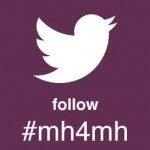 Could you provide an overview of D-TREE’s projects?
Could you provide an overview of D-TREE’s projects?
D-TREE enables community and facility health workers to deliver high quality health care in low and middle income countries by developing protocols for health workers, designing and testing software for delivering protocols on mobile devices and implementing use of these clinical protocols. Within maternal health, D-TREE’s projects focus on linking the facility and the community for a continuum of care through pre-pregnancy, pregnancy, childbirth, infancy and beyond. We implement decision-support antenatal and postpartum care applications, including PMTCT.
Other than the technology, what are key factors that can affect the success of an mHealth initiative?
Aside from the technology, other important factors include:
- Sound maternal health guidelines and protocols: Without sound protocols based on global best practices and government guidelines, the technology itself is useless
- non-mHealth interventions that are critical to the success of the program: For example, for our project in Zanzibar we supply emergency maternal transport
- Active participants: Technology can help facilitate and guide action, but the action must ultimately be taken by participants—often community or facility health workers—who in turn need guidance and supervision
- Multi-level partnerships: D-TREE works closely not only with our NGO partners, but with multiple levels of the Ministry of Health in Zanzibar and mainland Tanzania, who play an important role in implementation and scale up
How do your mHealth offerings leverage existing resources available to communities for maternal health?
For our community initiatives, we always utilize existing community agents who may be traditional birth attendants, community health workers, or some other informal cadre of community agent. In Zanzibar, we also leverage existing and dormant transport systems. Currently in Zanzibar, emergency transportation services are in existence but are inconsistent, expensive and often unreliable. We utilize existing emergency transport systems where possible (e.g., ambulances), but also have supported the creation of a community-based referral system made up of local vehicle owners (cars, boats, buses) within each area that are available transport women to a facility when needed at a fair price.
Are there limitations to the extent to which mHealth can be used to improve maternal health?
There are still barriers to quality care that mHealth interventions may fail to address. Despite D-TREE driving up standards of care within facilities and communities using mHealth decision-support applications, the reality is some people do not reach care in time or do reach it and receive sub-par care. In emergency circumstances such as Emergency Obstetric Care people may act quickly and on their instincts instead of using a tool.
Women may not seek care because it might still be considered culturally a “last resort”, and may instead go to Traditional Birth Attendants. Despite our integrating a decision-maker consent form into the registration process, husbands might still prohibit their wives from going to the facility until it is too late because of fear of hidden costs or exposure to male health workers. D-TREE is working tirelessly to encourage male involvement, though it’s clear that changing deeply engrained cultural birthing practices cannot always be overcome with mHealth.
Do you have an opinion on the role mHealth can play to improve maternal health? What do you see as the biggest advantages of mHealth? The limitations? If you are interested in submitting a blog post for our ongoing guest blog series on mHealth for Maternal Health, please email MHTF Research Assistant Yogeeta Manglani at ymm108@mail.harvard.edu.
